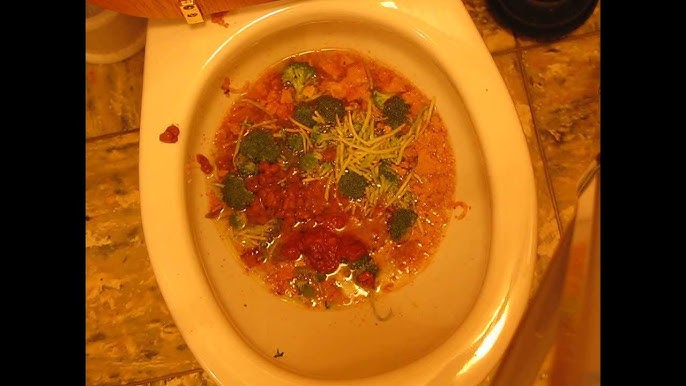Is it Safe to Dispose of Food in the Toilet?
Is it Safe to Dispose of Food in the Toilet?
Blog Article
Listed here on the next paragraphs you'll find lots of great details pertaining to Is it safe to flush food (especially rice) down the toilet?.

Introduction
Many individuals are often confronted with the predicament of what to do with food waste, specifically when it comes to leftovers or scraps. One common concern that arises is whether it's fine to flush food down the commode. In this write-up, we'll delve into the reasons why people could think about purging food, the effects of doing so, and different methods for proper disposal.
Reasons individuals might consider flushing food
Absence of awareness
Some individuals may not know the possible harm caused by purging food down the bathroom. They may wrongly believe that it's a harmless practice.
Benefit
Flushing food down the bathroom might seem like a fast and simple option to disposing of unwanted scraps, especially when there's no nearby trash bin available.
Negligence
In some cases, individuals might merely select to flush food out of large negligence, without taking into consideration the repercussions of their actions.
Repercussions of flushing food down the bathroom
Environmental effect
Food waste that ends up in rivers can add to pollution and harm marine ecological communities. Furthermore, the water utilized to purge food can stress water resources.
Pipes problems
Flushing food can cause stopped up pipes and drains, triggering expensive pipes fixings and aggravations.
Sorts of food that ought to not be flushed
Fibrous foods
Foods with fibrous textures such as celery or corn husks can obtain entangled in pipes and cause obstructions.
Starchy foods
Starchy foods like pasta and rice can absorb water and swell, leading to clogs in pipes.
Oils and fats
Greasy foods like bacon or food preparation oils ought to never ever be flushed down the bathroom as they can strengthen and trigger clogs.
Proper disposal approaches for food waste
Making use of a waste disposal unit
For homes geared up with garbage disposals, food scraps can be ground up and purged through the pipes system. However, not all foods appropriate for disposal in this way.
Recycling
Certain food product packaging materials can be recycled, decreasing waste and lessening environmental impact.
Composting
Composting is an environment-friendly method to dispose of food waste. Organic products can be composted and used to enrich soil for horticulture.
The value of proper waste management
Decreasing ecological harm
Appropriate waste management practices, such as composting and recycling, help reduce air pollution and preserve natural deposits for future generations.
Safeguarding pipes systems
By staying clear of the practice of flushing food down the commode, home owners can stop expensive pipes repair work and maintain the stability of their plumbing systems.
Final thought
To conclude, while it might be alluring to flush food down the toilet for convenience, it is essential to comprehend the potential consequences of this activity. By taking on proper waste monitoring techniques and taking care of food waste sensibly, people can contribute to much healthier plumbing systems and a cleaner environment for all.
FLUSH FOOD DOWN THE TOILET?
FLUSHING FOOD CAN CAUSE BLOCKED DRAINS IN YOUR HOME
All of the plumbing fixtures in your home are connected to the same sewer pipe outside of your home. This outdoor sewer pipe is responsible for transporting all the wastewater from your home to the Council sewer mains. Even small pieces of food that go down the kitchen sink can cause problems for your sewer. It should therefore be obvious that flushing larger bits of food, such as meat, risks a clog in either the toilet itself or the sewer pipes. Flushing greasy food is even more problematic because oil coagulates when it cools, coating the interior lining of your pipes.
THE TOILET IS NOT A BIN
Food isn’t the only thing that people shouldn’t be flushing down the toilet. People use the toilet to dispose of all kinds of things such as tampons, makeup wipes, dental floss, kitty litter and even underwear. Water goes to great lengths to educate residents about the high costs and stress placed on wastewater treatment systems simply from people flushing the wrong stuff down the toilet. It costs taxpayers millions of dollars each year, and homeowners thousands in blocked drain repairs.
FLUSHING FOOD IS A WASTE OF WATER
Flushing food is a waste of our most precious resource - water. In June this year Level 1 water restrictions were introduced to protect water supply from drought conditions. Much of New South Wales continues to be affected by prolonged drought with recent figures revealing up to 97 per cent of the state remains in drought. Depending on whether you have a single or dual flush toilet, every single flush uses between five and 11 litres of water. In the current climate this is a huge amount of water to be wasting on flushing food that should be placed in the bin (or better yet, the compost).
https://www.jabplumbingsolutions.com.au/blog/can-you-flush-food-down-the-toilet

We hope you enjoyed reading our post about Is it safe to flush food (especially rice) down the toilet?. Thank you for taking a few minutes to browse our blog post. Remember to take a moment to promote this content if you liked it. I praise you for your time. Kindly check up our blog back soon.
Additional Information Report this page